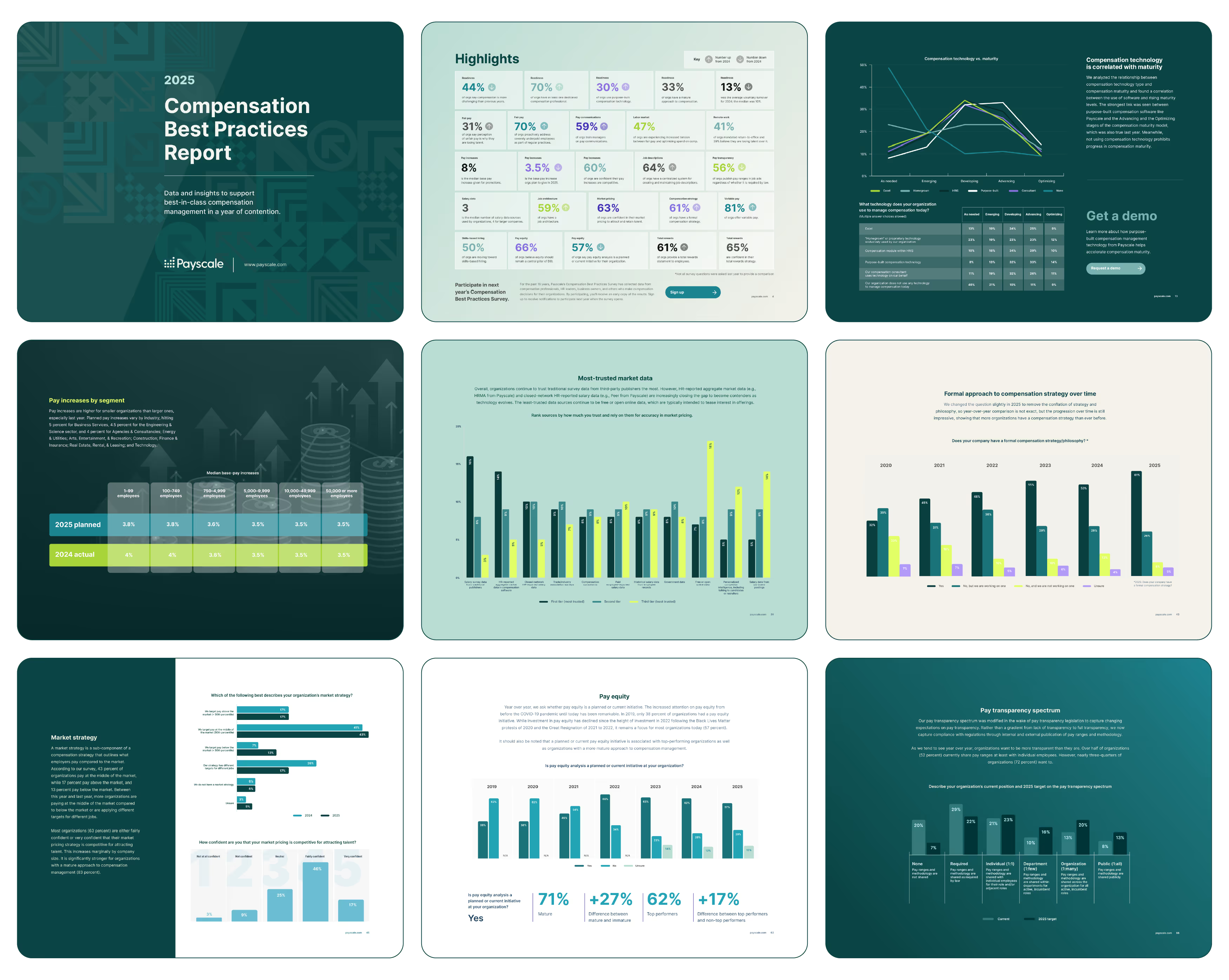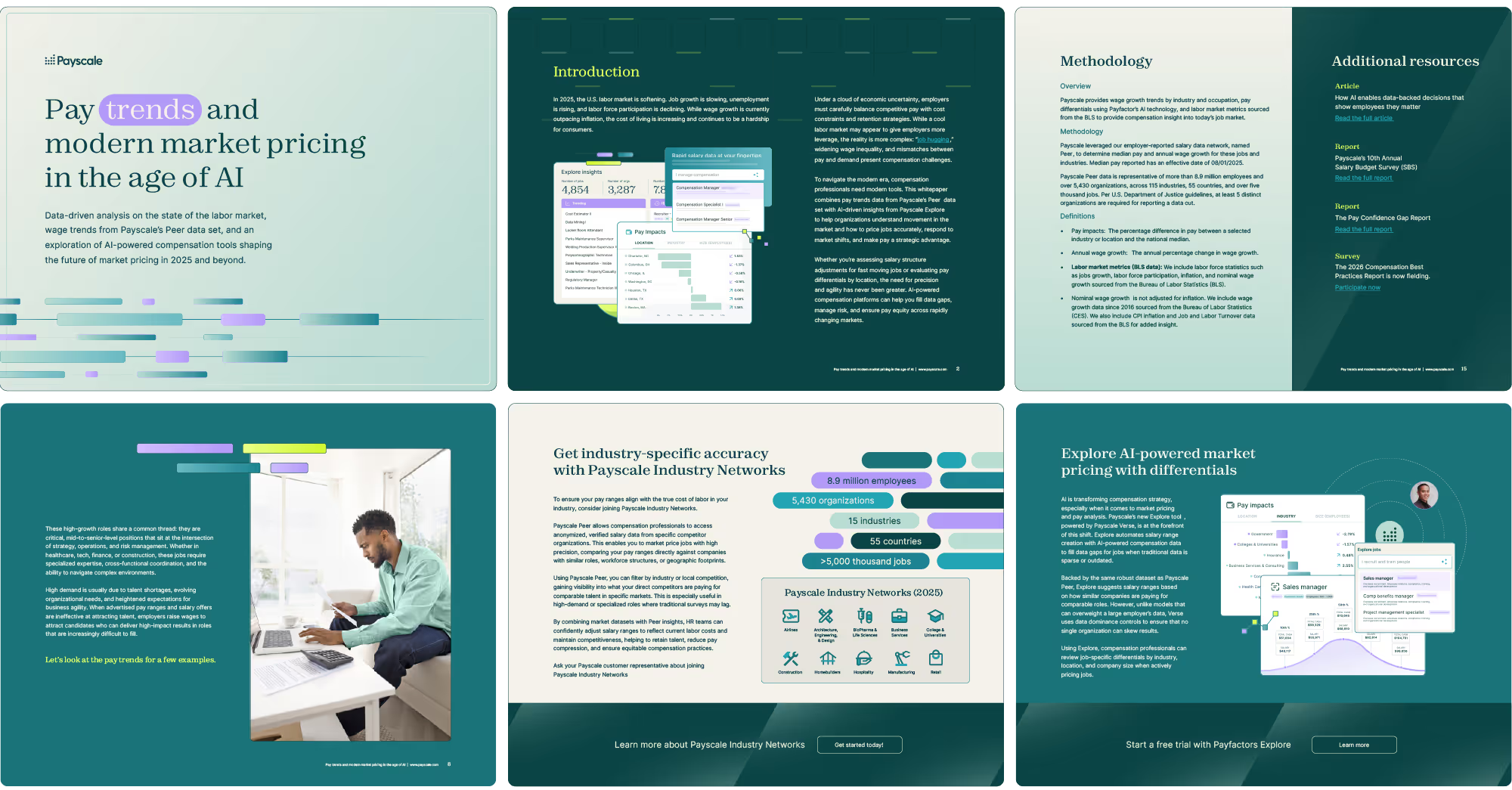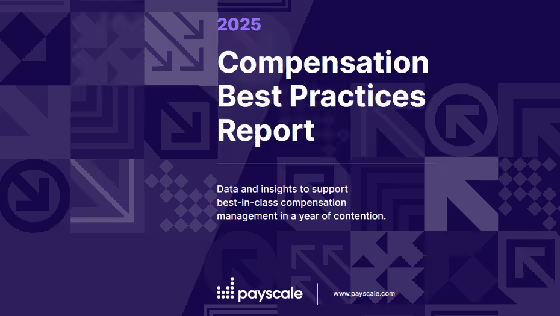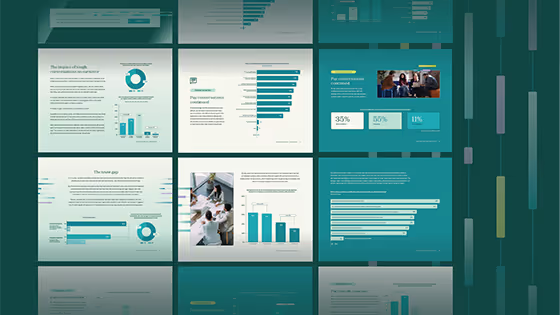Summary
In 2025, the U.S. labor market is showing signs of softening, with sluggish job growth, rising unemployment, and declining labor force participation. Although wage growth is currently outpacing inflation, the rising cost of living continues to burden consumers. For employers, economic uncertainty creates a difficult balancing act — offering competitive pay while managing costs and retaining talent. Despite a cooler labor market that may seem to favor employers, challenges like "job hugging," growing wage inequality, and misalignment between pay and market rates complicate engagement strategies.
To stay competitive and fair in this evolving landscape, organizations need smarter, more adaptive compensation tools. This whitepaper draws on Payscale’s Peer data and AI-powered insights from Payscale Explore to help employers understand market dynamics and price jobs accurately. Whether adjusting pay structures for fast-changing roles or analyzing location-based wage differentials, today’s compensation professionals must prioritize agility and precision. With AI-enabled platforms, companies can close data gaps, reduce risk, and promote pay equity in uncertain times.
State of the labor market
Recent reporting from the U.S. Bureau of Labor Statistics (BLS) shows that the U.S. labor market is losing momentum. Nonfarm payrolls for the year before March 2025 were downwardly revised by 911,000 jobs relative to prior estimates. Only 22,000 jobs were reported for August 2025 and the unemployment rate ticked up to 4.3%.
According to the BLS JOLTS (Job Openings and Labor Turnover Survey) in July 2025, job openings have declined while unemployment has surged, which has increased anxiety about the state of labor market. Both hires and total separations are down, showing an unwillingness from both employers and employees to make employment changes amidst macro-economic pressures.
Top industries and jobs by wage growth
While the job market is softening, compensation professionals still need to monitor pay trends. While overall wage growth is 3.9% in 2025, some jobs are seeing wage growth double that. While this is lower than in previous years, market adjustments will still be expected.
According to Payscale Peer, the industries seeing wage growth above the average in 2025 include Oil, Gas, & Consumer Fuels, Electronic Equipment, Instruments, & Components, and Construction & Engineering. Wage growth for the top ten industries are included in the full report.

We also looked at the top jobs by wage growth in our Peer dataset. In 2025, high wage growth roles in Peer are critical mid-to-senior-level positions focused on strategy, operations, and risk management.

Interesting roles to make the list include Utilization Review Coordinator, Public Relations Representative IV, Inventory Control Planner III, Compensation and Benefits Manager, and Recruiting Coordinator.
Utilization Review Coordinator is likely a top job in 2025 because healthcare systems increasingly rely on these healthcare professionals to control costs, ensure compliance, and manage complex care amid rising regulatory and operational pressures.
Public Relations Representative IV is likely a hot job in 2025 because organizations increasingly need experienced professionals to manage brand reputation, crisis communication, and AI-driven misinformation in an era shaped by generative AI and large language models, which can be influenced by strategic PR.
Inventory Control Planner III is likely a hot job in 2025 due to ongoing supply chain disruptions, increased demand forecasting complexity, and the need for data-driven inventory strategies amidst shifting trade policy.
Compensation and Benefits Manager is likely in high demand in 2025 as organizations face pressure to balance pay equity, talent retention, and cost control in a cooling labor market while adapting to the impact of AI on compensation management.
Recruiting Manager is likely a hot job in 2025 because companies are realizing they need talent acquisition professionals to navigate the labor market, address skills gaps, and compete for top talent despite growing adoption of AI-enhanced hiring.
Other hot jobs to make the list in 2025 are essential to digital modernization, operational stability, regulatory compliance, revenue generation, and strategic execution — critical priorities for organizations navigating large-scale change amidst economic uncertainty.
AI-powered market pricing
In a rapidly evolving labor market, compensation professionals face growing pressure to make timely, strategic pay decisions that balance internal equity, market competitiveness, and budget constraints.
Traditional benchmarking methods can fall short in today’s dynamic environment — especially as hybrid work reshapes geographic pay structures, industries require increasingly niche specializations, and organizations compete directly with a select number of organizations for talent. This is where AI-powered market pricing solutions, like those offered by Payscale, provide a critical advantage.
AI-powered market pricing helps organizations determine the right pay levels for specific jobs by considering factors like job role, industry, location, experience, market demand, and what specific competitors are paying. Unlike traditional salary surveys, AI-powered pricing continuously updates and detects patterns, enabling more precise, equitable, and competitive pay decisions that adapt quickly to changing labor market conditions.
In addition to market pricing, Payscale Explore can provide insights into differentials by geography, company size, and industry for specific jobs — all using HR-reported market data from actual employee salaries.
While AI-powered market pricing offers powerful advantages, organizations must address key risks to ensure compensation strategies remain accurate, equitable, and aligned with business goals. Here’s how common challenges can be mitigated with the right solutions:
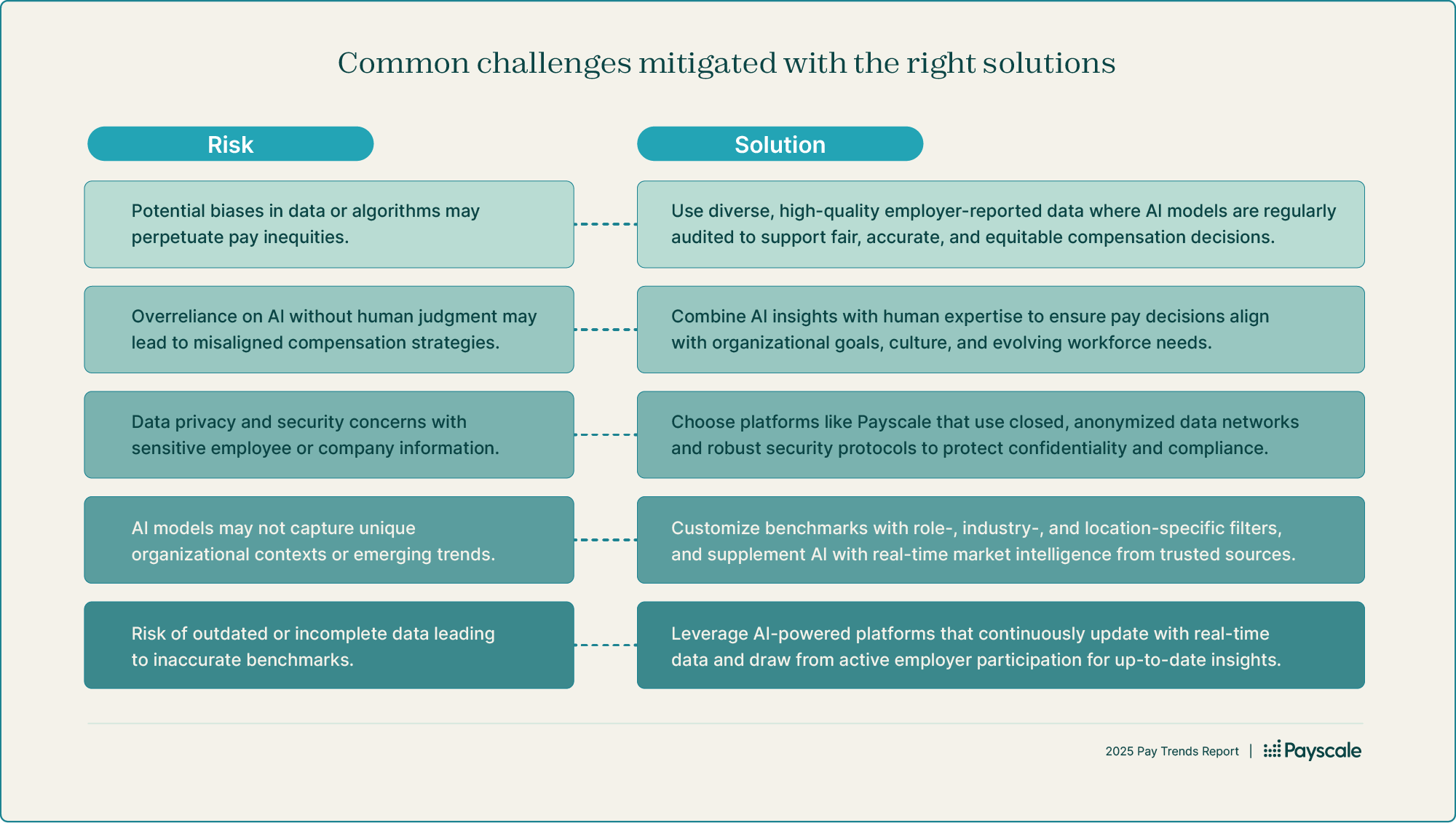
Compensation professionals looking for more efficient, accurate solutions should explore AI-powered market pricing because its ability to deliver precise, real-time, and data-driven insights far outweighs potential drawbacks, enabling smarter, fairer, and more agile pay decisions that are essential in today’s rapidly changing labor market.
Join Payscale Industry Networks
Organizations interested in closed, HR-reported salary data specific to their industry and not augmented with AI should consider joining Payscale Industry Networks, which provides access to richer, more accurate salary benchmarks drawn from verified employer data in Peer, enhancing the reliability and credibility of market pricing while protecting sensitive information.
By pooling HR-reported information in an anonymized way, Payscale Peer enables participating companies to gain deeper market insights, improve pay equity, and make informed compensation decisions with greater confidence.

Download the Pay Trends Report
Download the full report for deeper analysis on recent wage growth according to Payscale Peer and how Payscale tools like Explore and closed industry-based salary data networks can help you provide accurate, real-time salary insights to navigate cost pressures and engage top talent.
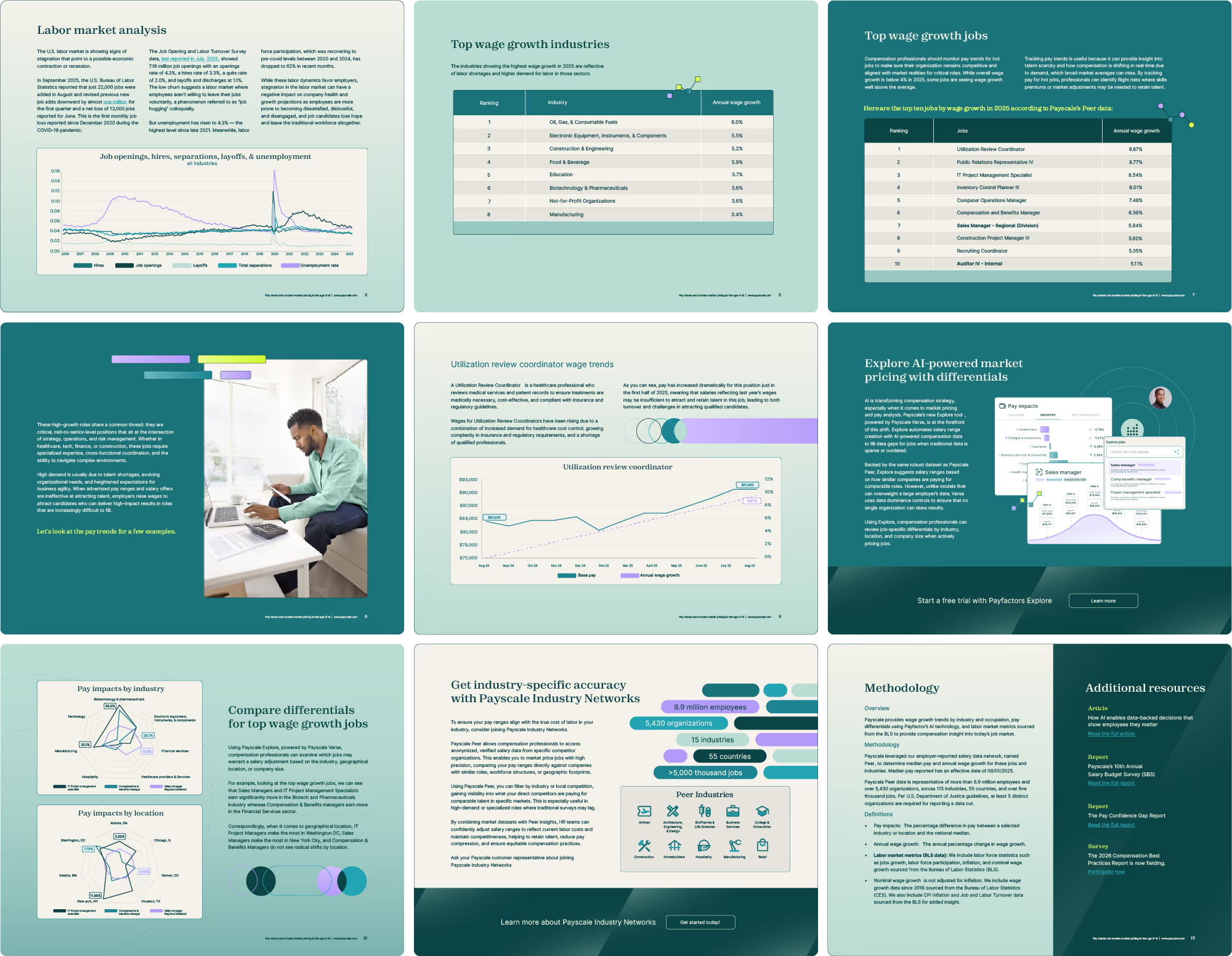
Methodology
Payscale provides wage growth trends by industry and occupation, pay differentials using Payfactor’s AI technology, and labor market metrics sourced from the BLS to provide compensation insight into today’s job market.

Payscale leveraged our employer-reported salary data network, named Peer, to determine median pay and annual wage growth for these jobs and industries. Median pay reported has an effective date of 08/01/2025.
Payscale Peer data is representative of more than 8.9 million employees and over 5,430 organizations, across 115 industries, 55 countries, and over five thousand jobs. Per U.S. Department of Justice guidelines, at least five distinct organizations are required for reporting a data cut.

- Pay impacts: The percentage difference in pay between a selected industry or location and the national median.
- Annual wage growth: The annual percentage change in wage growth.
- Labor market metrics (BLS data): We include labor force statistics such as jobs growth, labor force participation, inflation, and nominal wage growth sourced from the Bureau of Labor Statistics (BLS).
- Nominal wage growth is not adjusted for inflation. We include wage growth data since 2016 sourced from the Bureau of Labor Statistics (CES). We also include CPI inflation and Job and Labor Turnover data sourced from the BLS for added insight.

Payscale is the original compensation innovator for organizations who want to scale their business with pay and transform their largest investment into their greatest advantage. With decades of innovation in sourcing reputable data and developing AI-powered tools, Payscale delivers actionable insights that turn pay from a cost to a catalyst. Its suite of solutions — Payfactors, Marketpay, and Paycycle — empower 65% of the top companies in the U.S. and businesses like Panasonic, ZoomInfo, Chipotle, Quest Diagnostics, University of Washington, American Airlines, and TJX Companies.
Create confidence in your compensation. Payscale.
To learn more, visit www.payscale.com.

More Research & Insights
Participate in the 2026 compensation best practices survey
The largest survey on compensation best practices from Payscale is now fielding.
